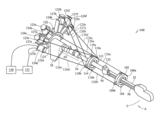BME100 f2017:Group13 W1030 L1
| Home People Lab Write-Up 1 | Lab Write-Up 2 | Lab Write-Up 3 Lab Write-Up 4 | Lab Write-Up 5 | Lab Write-Up 6 Course Logistics For Instructors Photos Wiki Editing Help | ||||||||||||||||||||||
OUR TEAM
LAB 1 WRITE-UPHealth Care IssueThe health care issue we decided to study is Cerebral Palsy. Cerebral Palsy is a common disorder, affecting roughly 500,000-800,000 people in the U.S. alone. Cerebral Palsy is a disease in which abnormal brain development causes motor disabilities in childhood. The effects range anywhere from small motor disabilities to a required 24-hour assistance.1 The health issue we would like to solve is the process of eating as a child experience issues with Cerebral Palsy. We would hook up an exoskeleton to the patient's arm, the exoskeleton would detect how the patient is trying to move and would in turn move a robotic arm the right way with perfect stability. This would allow the patient to eat without the need of help, as well as perform tasks that they may otherwise be unable to complete. Not only would this create a level of self-independence, but it would also create the opportunity for the patient to feel accepted in the social realm as he/she would be able to complete the actions that others perform seamlessly.
Customer Validation
Competitors
Based on the current solutions, our technology would be more effective in treating CP because it can be used by both children and adults, will stimulate the nerves/muscles in the patients and help them improve their movement, and is intended to be more affordable. IP PositionFundability Worksheet ScoresCompetitors Our Score: 2 We believe we scored a two on the competitor Fundability Worksheet Score because there are competitors out there, however the other products that are aimed to help in the areas we are focused on are fairly new with very few on the market. Most competitors have products aimed at helping in areas like walking.
Our Score: 1 We believe we scored a one on the competitor Fundability Worksheet Score because there is no customer feedback.
Our Score: 1 We believe we scored a one on the competitor Fundability Worksheet Score because we have not filed a patent application yet, however we are able to patent our design.
Works Cited
| ||||||||||||||||||||||







